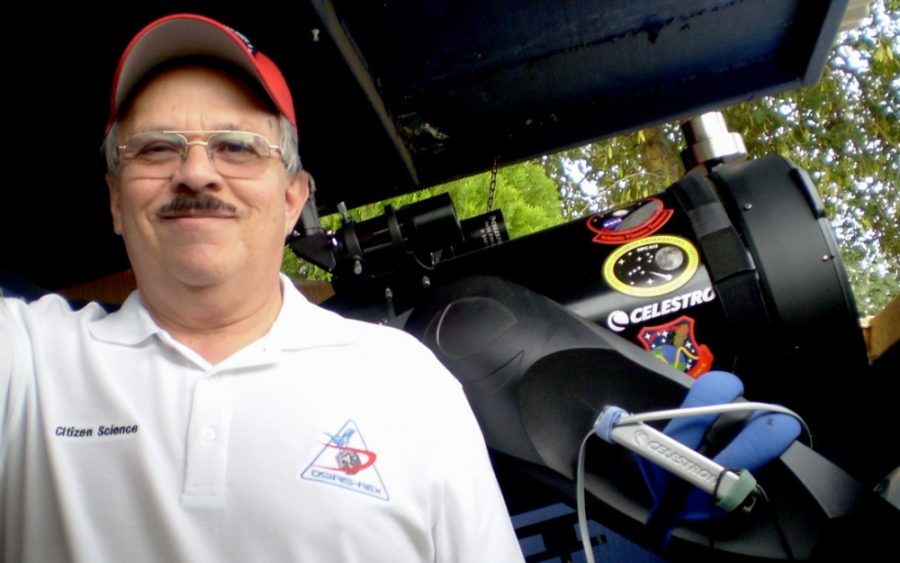A crowdsourced astronomy project at the UA allows amateur astronomers to take a break from stargazing and train their telescopes on a new target: asteroids.
Target Asteroids! is a citizen science project where amateur astronomers can collect data for the Origins Spectral Interpretation Resource Identification and Security-Regolith Explorer mission.
OSIRIS-REx is a NASA spacecraft mission to near-Earth asteroid Bennu. The primary objective of the mission is to return 60 grams of Bennu to Earth in 2023, according to Dolores Hill, a senior research specialist and co-lead on the Target Asteroids! project.
Bennu was chosen as a means to elucidate both how Earth and life on Earth began. It dates from the earliest history of our solar system and may contain the molecular precursors to life on Earth. It is also potentially hazardous, having a high probability of striking earth.
Scientists will use the data brought back from the mission to answer fundamental questions about Earth’s origins as well as prepare a defense against the possibility of collision.
For the mission, the researchers need to collect enormous amounts of data on asteroids. They have turned to amateur astronomers to help fill this gap with great success. The amateur astronomers collect data by observing and imaging specified asteroids as they travel through the sky.
“They may be amateurs in that they aren’t actually paid, but some of them are just as good as professional astronomers when it comes to collecting and reducing their data,” said Carl Hergenrother, staff scientist and co-lead on the project.
The big advantage to using citizen science is that most astronomers have their own telescopes, which means they can observe any night they want. For professional astronomers using professional telescopes, they may only get to use the telescope once a month, Hergenrother said.
“Two-year-old Target Asteroids! is an award-winning program with more than 277 participants and 107 active observers and ‘measurers’ spread over 32 states and 39 countries,” Hill said.
One such observer is Luis Martinez, a retired police chief currently working on a master’s degree in astronomy. He has been working with Target Asteroids! for two years after seeing a call for amateur astronomers in the Minor Planet Bulletin, though his interest in asteroids stretches from 2008.
“Amateur and professional asteroid research may save the planet someday,” Martinez said. “I am retired with time available; how can I not participate? It sure beats golf.”
Martinez also goes out every night and selects an appropriate asteroid for his telescope. He then uses specialized software to fix the telescope on the asteroid and guide it through the night. The data collected is then uploaded to the project server.
“After the data are submitted, both co-leads archive the data,” Hill said. “Carl Hergenrother reduces the data and combines all of the observations. He corrects all of the observations that were made with different telescope sizes and types, a variety of filters and dates to a standard reference.”
The project is not only for the mission. Ideally, it will continue on and the data will have impacts on future space missions.
It also provides a space for astronomers to become scientists.
“[Astronomers] love what they do and they are looking for something beyond what they’re used to observing,” Hergenrother said.
_______________
Follow Amy Nippert on Twitter.









